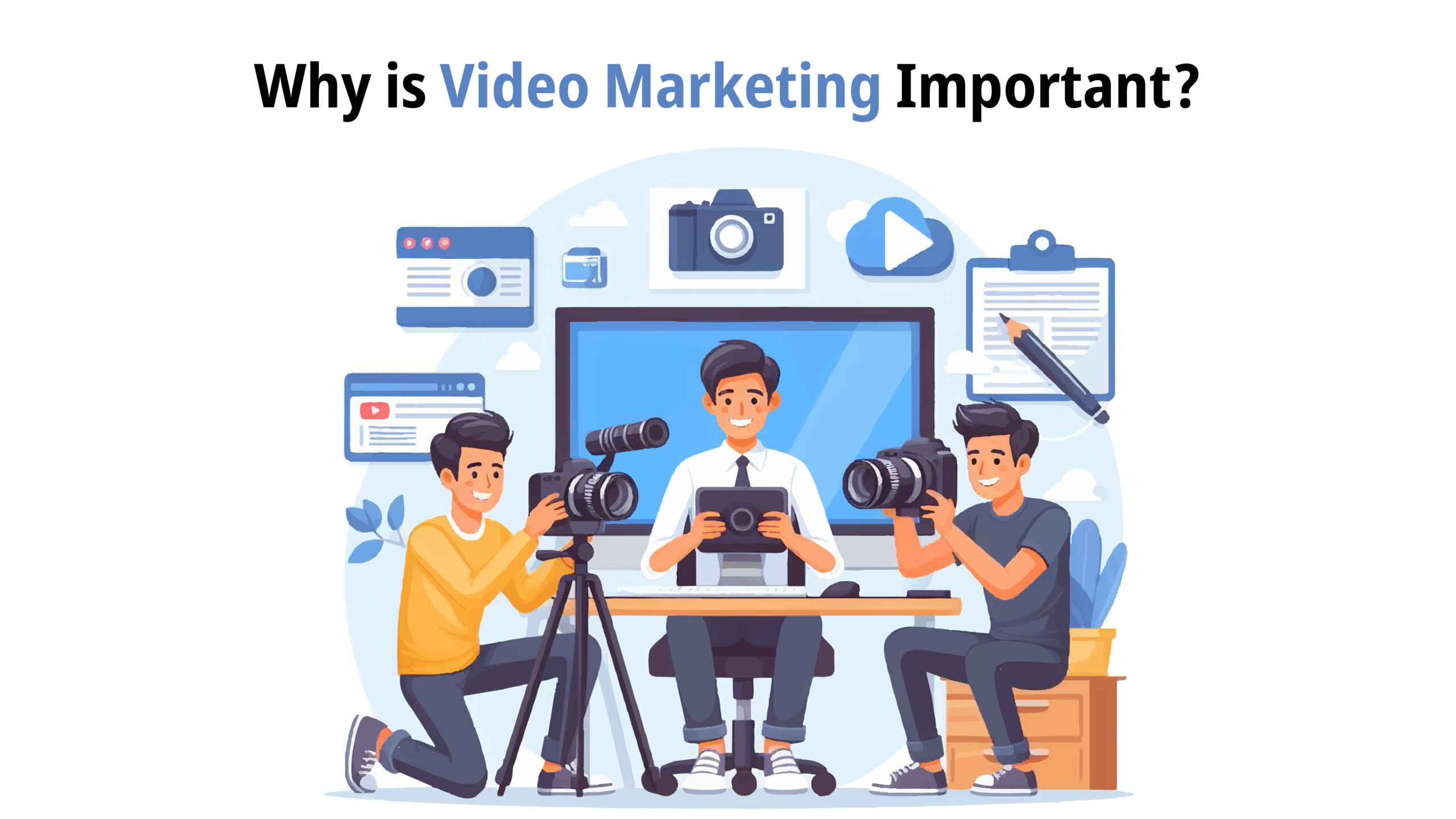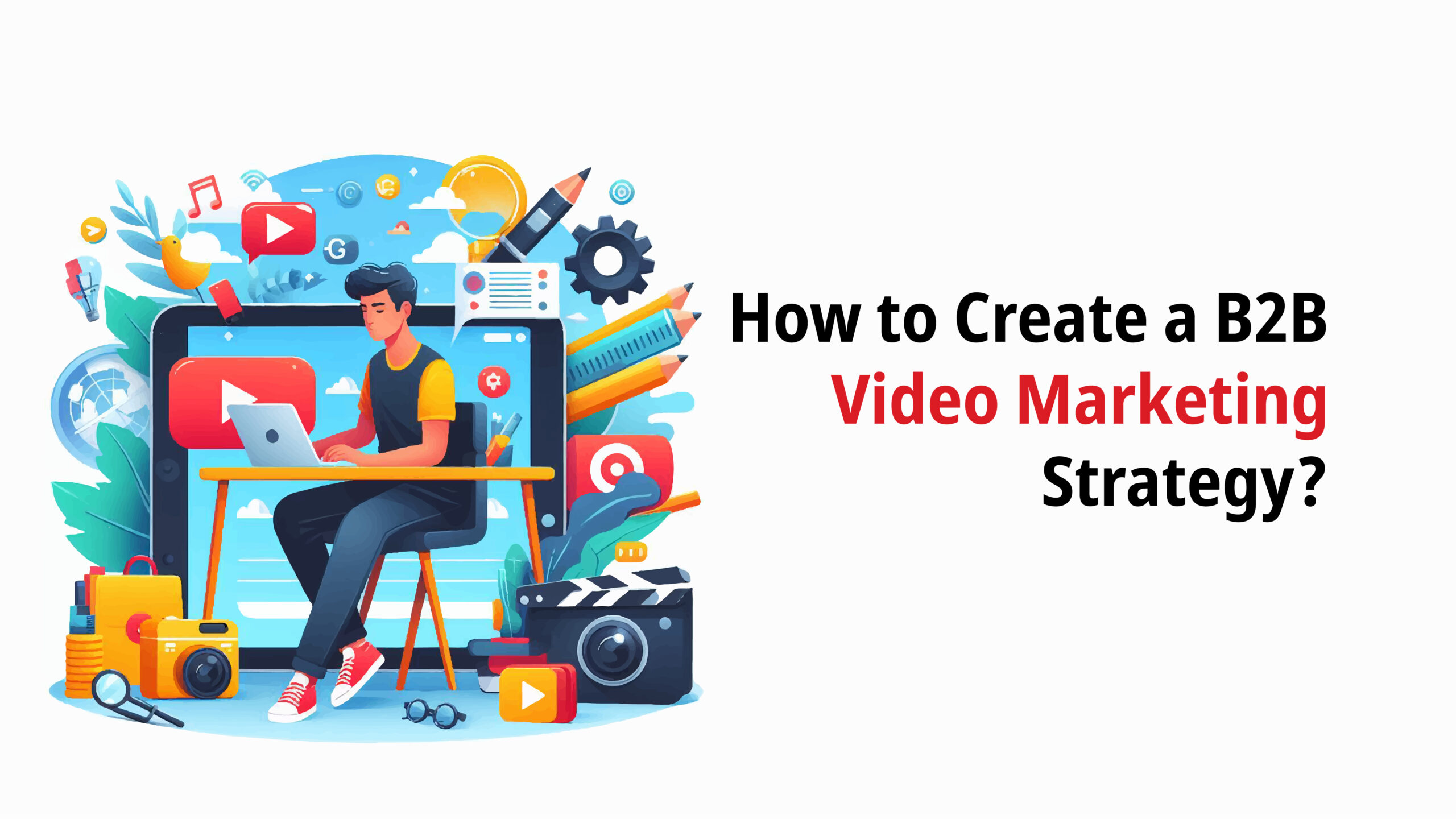Video marketing is everywhere. Brands are realizing the importance of videos as a part of their content strategy.
This is because the average retention rate for video content is about 62%. Creating viral videos is an excellent way to capture audiences, generate leads, and boost sales.
Think Tiktok, nearly 170 million users rely on it to generate primary and secondary incomes. This includes 7 million small businesses that use the app to generate conversions.
We live in a world where watching one-minute videos can potentially lead to cash flow. Read on to learn everything about video marketing.
What is Video Marketing?
Video marketing refers to the use of video content to advertise a company, product, or service. A range of channels and formats can be employed to effectively reach and engage audiences through video assets in marketing efforts.
Videos can be used by brands in a wide range of digital contexts and platforms, such as social media marketing, programmatic advertising, their website, and more.
Why is Video Marketing Important?
The importance of video marketing is well-known among marketers. According to studies, 91% of brands use videos in their marketing strategy. Furthermore, 88% of marketers have witnessed substantial growth with video content.
Online, video content is rapidly taking over as the dominant medium. As per Statista, over three billion people watched streaming or downloaded videos on the internet at least once a month in 2023. This explains how successful video marketing is.
The major reason why video marketing is important is because of its popularity.
About 96% of people prefer to watch explainer videos to better understand a product. Among the high percentile, around 86% of people are more likely to buy that product or service. These statistics explain the importance of video in consumer behavior.
How to Create a B2B Video Marketing Strategy?
Here’s how to make good video marketing.
Set your goals first
With a stated objective in the first place, it is possible to achieve one. Be sure to identify your goals for your video marketing project before you start anything video-specific.
Your video should typically focus on one of the following three stages of the buyer’s journey:
- Awareness: By highlighting the issues your products or services address, your film at this point serves to introduce viewers to your brand.
- Consideration: By the time your viewer reaches this stage, they are well aware of their issue and are considering several alternative solutions. Your video’s objective is to demonstrate how your product can benefit them and, to some extent, why it is superior to the competitors.
- Decision: You advance things in this situation. Your content must demonstrate to your customers that you have happy customers since they are almost ready to make a purchase. In order to demonstrate how your product is a better option than rivals, your video may also directly contrast it with them.
Also Read: Personalized Video Marketing: Connecting with Your Audience Like Never Before
Identify your target market
The goal of marketing videos is to sell items, not to produce an original and genre-defying work of art. They are always made with the target audience in mind.
Create a distinct persona of the target audience. Consider the following points:
- Location
- Age
- Gender
- Position Title Views and Opinions
- Level of Education
- Challenges
Create customer avatars using this data. It would be simpler to outline a successful client journey and generate potential leads with the help of these buyer profiles.
Every company draws outliers with comparable requirements and passions. However, your ideal persona should be the focus of your primary business promotion. Observe which audience segments convert best, then do some research on them.
Select the narrative you want to tell
Everyone’s development needs stories since they help us live our lives and make decisions. We seek and exchange stories almost from the minute we are born.
Of course, video is a potent form of storytelling. You must be certain of the story you want to tell if you want to make the most of it.
You’ll have a better chance of making an impact on viewers if you find a method to turn whatever is in your video into more of a narrative.
Create a Market-Specific Strategy
Think of your strategy as the thesis statement of your organization. What is the outcome your business wants to achieve? What approach would make your competition irrelevant?
Outline Brand Vision
Develop a clear vision of what your business intends to accomplish. Answer these two questions for your B2B marketing strategy:
- Why are we in this market (and not another one)?
- How are we going to be the best in this market?
Look at how your company solves customer pain points in a superior way. Or pinpoint the ways your business innovates in your market to create new demand.
Identify a Unique Value Proposition
Reflect on your company’s mission statement and the transformation your product or service creates for customers. Having researched your close competitors, are you filling a gap in the market or innovating on the current standard? This is your unique value proposition.
Compose your strategy
Share your vision of success in its realized form. For some businesses, the overall business mission will naturally guide the marketing strategy. Consider all of the steps you have completed and the information you have gathered so far.
Write down your strategy and include:
- Your vision for the business
- Any issues the strategy needs to address
- The projected result of a successful strategy
Your strategy might be a sentence or a few paragraphs; keep it succinct. Your marketing strategy postulates success; what must happen for this to be true?
Combine your brand vision, an innovative approach in your market, and the intended result.
Outline Channels and Technology
With the information you have now and your strategy in hand, determine if there are any gaps. Start by listing your marketing channels. Common channels include:
- Website or landing pages
- Newsletter
- Blog
- Social media
- Paid advertising
- Webinars
- Demo or Trials
- Opt-in offers (white papers, case studies, etc.)
- Knowledge Base
Perhaps you thought social media was covered; however, after reviewing the market and your competition, you’ve learned that your audience is more likely on TikTok than Facebook. Alternatively, maybe you’ve been paying for advertising but haven’t developed a marketing funnel to attract organic leads and nurture potential customers.
Additionally, consider how you will distribute your content. Each stage of your sales funnel (discussed in the next section) will require its own distribution plan. As you map your customer journey, determine how and where you will reach people with your content.
Should I Reuse the Same Video for Every Platform?
Yes, you can cross-post the same content but tailor it to the respective platforms and audiences. Here are some points to keep in mind when using the same video content:
- Platform-specific requirements: Different platforms may have specific guidelines for video format, length, and quality. Ensure your video meets these requirements for optimal viewing.
- Audience preferences: Each platform has its own unique user base with different preferences and behavior patterns. Consider tailoring your video content to match the expectations and interests of each platform’s audience.
- Platform features: Some platforms offer unique features like live streaming or interactive elements. Take advantage of these features to enhance user engagement and create a more tailored experience.
- Context and relevance: Consider the context and purpose of each platform. Adapt your video content to align with the platform’s environment, trends, and user behavior to ensure it feels relevant and valuable.
- Repurposing vs. customization: Find a balance between repurposing and customizing your videos. While reusing content can save time, consider customizing certain elements to cater to the specific platform and audience.
Video Hosting Platforms
Here are examples of both free and paid video hosting platforms: Free video hosting platforms:
- YouTube: YouTube is the most popular free video hosting platform, with a large user base and an extensive catalog of online videos.
- Dailymotion: Dailymotion is another popular free video hosting platform that allows users to manage and distribute their videos across various categories.
- Vimeo: While Vimeo offers both free and paid options, it is known for its sleek player and engaged audience of professional creatives.
Paid Video Hosting Platforms:
- Wistia: Wistia is a paid video hosting platform that provides analytics, insights, and lead capture capabilities within the video player.
- Brightcove: Brightcove is an enterprise-level video hosting service used by major brands, offering customizable and secure video publishing solutions.
- Spotlightr: Spotlightr (formerly vooPlayer) is a paid platform that offers in-depth analytics, interactive features like quizzes, and customization options for video hosting.
9 Best Video Marketing Tips
Here are tips for producing effective video content. These pointers will assist you as you prepare and produce your video content.
Let’s jump in.
- Set objectives for a video
- Make appropriate marketing channel selections
- Create a budget right away
- Don’t focus on the tools
- Make videos based on the problems that your audience has
- Make use of storytelling
- Before you shoot, prepare your videos
- Make sure your videos are consistent with your brand
- Use music to add interest
Is Video Marketing the Future?
Video marketing is undeniably the future of marketing. With the rise of digital platforms and changing consumer preferences, video has emerged as a powerful tool for engaging audiences and driving conversions. Its ability to convey messages in dynamic and engaging ways makes it particularly effective in capturing and retaining viewer attention.
Moreover, the versatility of video marketing allows businesses to adapt their content to various platforms and formats, catering to the diverse needs and preferences of their audience. As technology continues to advance and video consumption patterns evolve, businesses that prioritize video-based marketing are likely to stay ahead of the curve and effectively connect with their target audience in the increasingly competitive digital landscape.


Comments are closed.